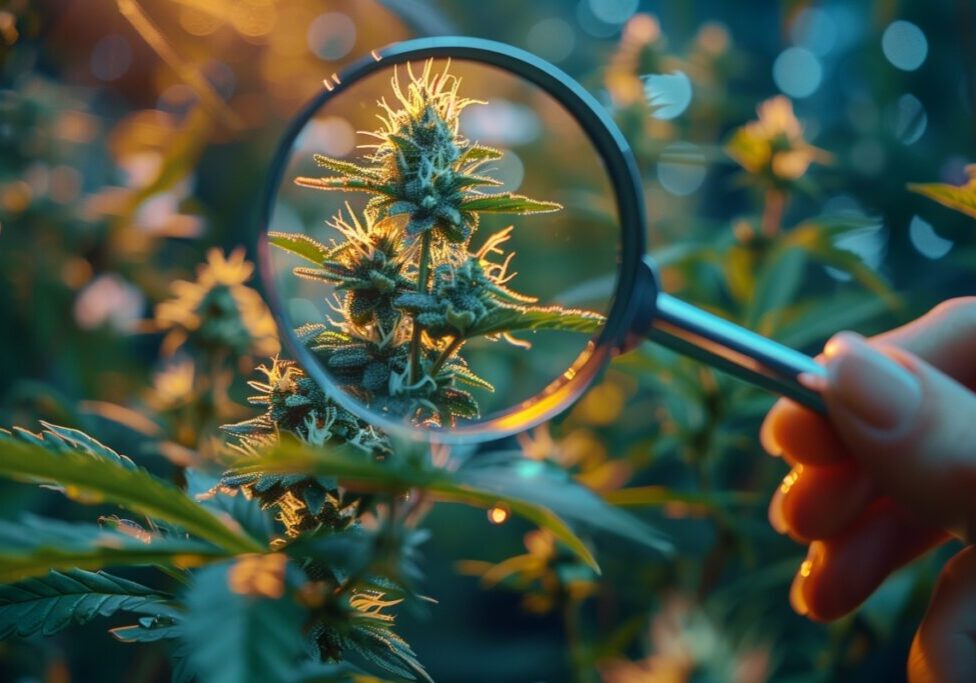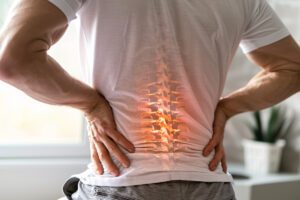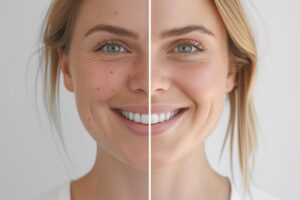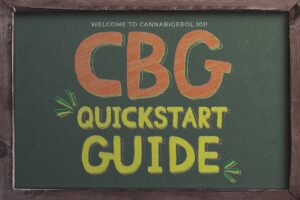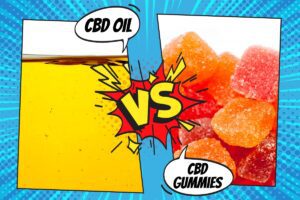Mysterious medicine? Cannabis cure-all? Mind-altering plant? 😵💫
Just what is CBD cannabidiol, and why does it seem like it’s taking over everywhere these days?
Let’s tackle those questions and more in today’s CBD 101 blog post!
Cannabidiol basics
CBD is shorthand for cannabidiol [pronounced kah-nuh-bih-dee-all]. It’s the active ingredient in CBD products that’s been getting all the menchies in the world of health supplements.
Things weren’t always like this, though. THC — the psychoactive cannabinoid in cannabis plants that makes users feel “high” — hogged the research spotlight for decades. Its unmistakable effect on humans was unlike anything seen before, and everyone, from scientists to governments, wanted to understand how it worked.
No one paid attention to cannabidiol during those years because it didn’t appear to do much at first glance. Then, the focus dramatically shifted in the early aughts to CBD effects. Scientists discovered CBD had therapeutic potential all its own. It was a turning point in cannabis research that marked the rise of CBD as an alternative medicine.
FREE CBD gummies: Claim your 7-day CBD sample box while supplies last!
CBD and its hidden helpers
CBD is called a “major” cannabinoid because it’s the dominant medicinal compound in hemp plants. Other “minor” cannabinoids produced in much smaller amounts are important, too.
Minor compounds like cannabinol (CBN) and cannabigerol (CBG) make your CBD treatment more effective. But the treasure trove of healing plant medicines doesn’t stop there.
Hemp CBD extract — especially a minimally processed kind called true full spectrum extract — is chockful of aromatic terpenes and anti-oxidant flavonoids, produced in trace amounts in medicinal cannabis plants. Together, they create a full spectrum of benefits to help you feel better naturally!

RELATED: How is cannabidiol different from marijuana, cannabis, and hemp?
What is CBD used for?
Let’s talk health benefits because CBD oil is genuinely loaded with them!
Cannabidiol and other medicinal cannabinoids are very similar to the endocannabinoids our bodies produce naturally. When they hit the bloodstream, cannabinoids act like tiny chemical messengers, working in their own unique way to promote CBD benefits.
Here are the ten most common uses for CBD cannabis extract in healthy adults 18 and older:
- Reduce stress
- Stabilize mood
- Soothe nervous tension
- Relieve occasional anxiety and panic attacks
- Ease minor muscle aches and joint pain
- Decrease inflammation
- Support healthy immune function
- Promote gut health
- Balance sleep/wake rhythms
- Boost daytime energy levels

RELATED: Hemp oil over the counter is safe, legal, & shipped to your door
The magic behind the medicine
How CBD works to relieve some of the most common wellness concerns safely and naturally is a remarkable feat worth mentioning. Here’s what we know based on the latest cannabis studies.
How does CBD work?
Inside your body is a specialized network of receptor sites that respond when cannabis CBD compounds interact with them. They’re called cannabinoid receptors CB1 and CB2.
CB1 and CB2 receptors are part of a more extensive communication network called the endocannabinoid system (ECS). It regulates just about every vital function in your body, from stress response to pain sensation, appetite, mood, blood pressure, and sleep/wake rhythms.
Think about it: the ECS influenced your mood this morning. It affects how resilient you feel to the pressures of stress today and how restfully you sleep tonight. All these effects and more result from the interaction between the ECS and various body systems.

RELATED: Change the way you feel with CBD for healthy nervous system function
What happens when you take CBD?
Taking a cannabinoid-rich medicinal CBD product sends waves of relaxation and healing throughout the body using the ECS.
CBD is a reuptake inhibitor that increases natural levels of the body’s own endocannabinoids. These act similarly to opiates and are thought to be responsible for the “runner’s high” many people experience after a grueling cardio session.
Cannabidiol also interacts with other receptor systems, like TRPV-1. When CBD binds to TRPV-1 receptor sites, it signals them to produce an anti-inflammatory effect in the body. TRPV-1 receptors also inform pain sensation, and the interaction with CBD may reduce pain sensitivity.
Research studies show that cannabinoids affect neurotransmitter levels, too. CBD interacts with the 5-HT1A serotonin receptor to support positive mood balance and improve outlook.
Will CBD work for me?
CBD works for lots of people but may not work for everyone. How you respond to CBD therapy depends on numerous factors.
Following all CBD usage and safety recommendations, including CBD dosing guidelines, will ensure you get the best results from your CBD wellness plan. If all else fails, know that you can confidently try Cannabiva products risk-free with our 90-day love it or leave it guarantee.
What types of CBD are there?
Hemp extracts come in three types. The main difference between them is cannabinoids content. Let’s break down what sets them apart from each other:
Full spectrum CBD is considered the gold standard because it’s minimally processed. It offers the broadest range of cannabis plant medicines. Together, these compounds create a powerful synergistic effect that can make your CBD product more effective. Scientists call this phenomenon the entourage effect.
People looking for a THC-free cannabis product should consider a broad spectrum CBD alternative to the full spectrum variety. Broad spectrum CBD has many of the same beneficial plant medicines but no THC (0.0%). It’s perfect for anyone who may be hypersensitive to THC or avoiding it for other reasons.

RELATED: Full spectrum vs broad spectrum extract
We’ve saved the purest form of CBD for last. Isolate is a pharmaceutical-grade hemp extract that’s over 99.7% pure CBD and nothing else — not even a hint of THC (0.00%)!
Choose CBD isolate oil tinctures and powders if your primary concern is absolute purity.
What’s the best cannabidiol product to use?
Different forms of CBD work a little differently. Some, like oil tinctures, are fast-acting. Others, like softgels and edibles, kick in more slowly but last a long time. Topical skincare options target areas directly.
Let’s explore the most popular CBD product options and see which sounds best!
Fast-acting CBD oils
Tincture oil is the fastest-acting CBD product. It’s also long-lasting when you take it as directed. All in all, cannabidiol oil tinctures are perfect for your busy schedule.
HOW TO USE:
Squeeze a few drops of concentrated, potent, and bioactive CBD oil under the tongue (called sublingual use). Hold there for up to a minute. Then swallow with your favorite beverage and presto! Effects peak within three hours and last up to eight hours.
BENEFITS:
Sublingual tincture use works in minutes (approx. 20 to 30) because cannabinoids rapidly absorb into the blood through the tiny capillaries in your mouth. Swallowing after sublingual use provides long-acting benefits as CBD makes its way through the digestion process.
Tasty CBD gummies and edibles
Can you think of anything better than combining all the powerful benefits of cannabinoid medicine with the delicious delight of a sweet candy treat? We can’t either! The addition of CBD edibles like gummies, chocolate, and honey sticks gives CBD use a whole new dimension.

RELATED: See why CBD gummies are the sweetest stress relief there is
HOW TO USE:
Savor every delicious bite of your CBD edible. Then, wait about one hour after ingesting CBD to feel benefits kick in. The peak effect of an oral CBD dose occurs in about three hours and lasts six to eight hours.
BENEFITS:
Noshing a CBD edible is the tastiest way to add CBD benefits to your wellness plan every day!
Precision CBD capsules and softgels
If you need convenience, discreteness, and precision, CBD softgels and capsules are ideal. Available in 25 mg doses, they provide a hassle-free way to maintain consistent CBD intake. Softgels are great to take with you on the go!
HOW TO USE:
For best results, take softgel capsules by mouth immediately before or after a meal. Food slows down the breakdown of cannabinoids and increases their absorption in the body as a result. Taking CBD with food could make it last up to eight hours per oral dose.
BENEFITS:
Research shows that softgels are the preferred way to administer CBD in human clinical trials because they are standardized and deliver the full dose to the stomach for digestion.
Topical CBD skincare
Target sore muscles and joints with hemp-infused CBD cream, lotion, or skin balm. These products deliver localized relief and are ideal for application when needed.
HOW TO USE:
Apply oil tincture, CBD cream, salve, or balm to the specific area in need of CBD treatment. Massage into the skin until fully absorbed. Wait 30 minutes to one hour for the benefits of topical application to kick in.
BENEFITS:
Internal CBD use works systemically and can take up to three hours to reach peak effects in some cases. Topical use delivers a concentrated dose where you need it most. Safely combine topical CBD with other forms made for internal use.
FAQs for “What is cannabidiol CBD?”
We’re here to help if you still have questions about CBD cannabidiol! Review the answers to frequently asked questions or live chat a Cannabiva Sales Associate if you need to ask us something we haven’t covered in today’s blog post.





